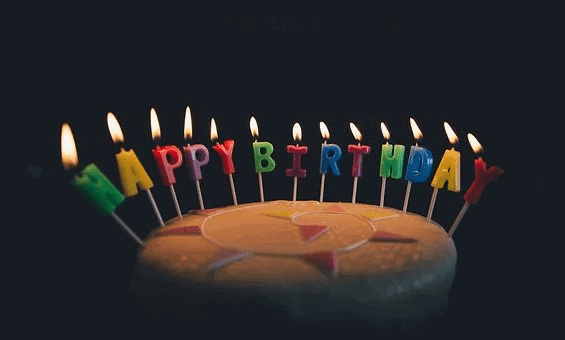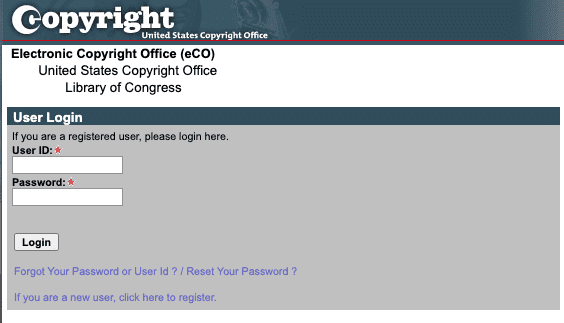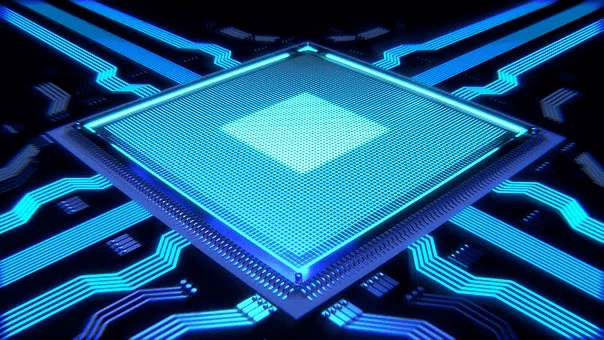There are surprisingly a lot of differences between these two types of intellectual property (IP) rights. In the simplest language, copyrights protect artistic works, while patents protect inventions.
There are four main areas of IP Law, and patents and copyrights are just two of them. You will see below, Ii’ve listed each area of IP and the federal statute (i.e the law) associated with each.
Intellectual Property (IP) comprises the 4 main areas of law we will cover today:
- Patents (Title 35 United States Code)
- Trademarks (Title 15 United States Code)
- Copyrights (Title 17 United States Code)
- Trade Secrets (Title 18 United States Code)
If you’ve ever started (or plan to start) a business, you have likely held IP in each of these areas, even if you didn’t know it. No matter what kind of business whether you are selling goods, services, or a combination – IP is involved.
Below is a chart which compares the four main areas of IP on the far left column, and compares the top questions across the top with the answers and differentiators between each area of law in the matrix.
| What is Protected? | How Long? | Type of Law? | Government Body? | Common Law ? | Pre-Reg. Mark | Post-Reg. Mark | Exclusive Rights | |
| Patents | Inventions | 15-20 Yrs | Federal | USPTO | No | “Patent Pending” | Patent Granted | Make, Use, Sell, Import |
| Copyrights | Artwork | 70-170 Yrs | Federal | U.S. Copyright Office | Yes | “Copyright [Date], Company Name, All Rights Reserved” | © | Reproduce, Make Derivative Works, Perform, Display |
What is Protected? What have you created?
Creation is really the heart of IP, and it will spring forth protections in all 4 areas of law. This is the fundamental question that must be answered to start.
Is it physical and tangible? Or Is it virtual/intangible? Have you created a brand? Did you discover something? What does it smell like? Does it have a distinct sound? Do people like it? Do they hate it? What feelings are evoked?
All of these questions can help you put your finger on what thing or set of things you’ve created.
Let’s talk about each area of IP in turn as we explore Copyrights and Patents to uncover the differences and similarities of the two.
Copyrights

So, what do copyrights protect?
Art.
What is Art? Ok, don’t get too metaphysical with me here – let’s stick to something along the lines of “tangible creative works.” And this is pretty close, although I think there are likely many other definitions.
The major point is that there has to be a “recording” or a “physical manifestation” which just means the ability to prove that something was indeed created, and it is fixed.
17 U.S.C. § 102 specifies that: “copyright protection subsists, in accordance with this title, in original works of authorship fixed in any tangible medium of expression…”
Creative works are as wide open as you can imagine: Dance/choreography, painting, drawings, patterns, literary works, photography, pictorial, graphic, and sculptural works, sound recordings, architectural works, motion pictures, and musical works, etc.
Copyrights don’t last forever! After 70 years has passed after the author has died, the rights to the copyright cease, and the work belongs to the public domain.
A great example of this is The Happy Birthday Song, which only recently passed into the public domain in 2016.

A copyright provides the owner of the copyright the exclusive right to reproduce and distribute copies, prepare derivative works, as well as perform or display the work publicly.
To author an original work, a human must have independently created the work and the work possesses at least some minimal degree of creativity. That doesn’t mean it ahs to be unique (which is like patents).
The author does not need to register the work (at least initially) in order to have the copyright (such as when posting pictures or video to the internet), but the author must register the copyright if they want to sue another party for infringement in federal court.
What’s the process for registering a copyright?
Copyrights are kept at the library of congress, and have a separate copyright office from the United States Patent and Trademark Office [USPTO] (which is the keeper of trademark registrations and published/granted patents).
For copyright registration step-by-step guide, check out this wonderful site here: https://www.copyright.gov/registration/ which walks you through all of the steps.
The copyright office has digitized its forms, and developed the “eCO” (electronic copyright office), which has made the registration process quite simple. Here is what the log-in page looks like:

Once you create a log-in, it will guide you through all of the steps.
Patents

What do patents protect?
Inventions.
United States Patents grant an inventor (or assignee – another name for an owner) an exclusive right, or monopoly, for a limited time (15 years for a design patent and 20 years for a utility patent) on the claimed subject matter disclosed in the issued patent.
In fact! Patents are such a big deal (along with copyright) that they were called out in the U.S. Constitution by our founding fathers:
Article 1, Section 8, Clause 8 of the United States Constitution grants Congress the power “[t]o promote the Progress of Science and useful Arts, by securing for limited Times to Authors and Inventors the exclusive Right to their respective Writings and Discoveries.”
A granted US patent gives an exclusionary right. This right allows inventors/owners of patents to exclude others from making, using, offering for sale, or selling the invention throughout the United States or importing the invention into the United States.
The patent system is set up to incentivize inventors and reward them for sharing their great ideas, and telling the country (if not the world) how to make and use it. The founding fathers knew sharing of information and learning would be vital to our country’s growth and prosperity. Secrecy and lack of trust/transparency would not be.
So, what’s patent eligible?
Quite literally “anything under the sun that is made by man.” I love this, and it’s so simple. Yes, there are recent nuances when it comes to computerized technology (which is much to my chagrin), but for the most part, its true today.
More specifically, 35 USC specifies that there are four main types of utility patents:
“Whoever invents or discovers any new and useful process, machine, manufacture, or composition of matter, or any new and useful improvement thereof, may obtain a patent therefor, subject to the conditions and requirements of this title.”
- Process Patents: Process patents are those that claim ownership over a specific method or process. The way the claims are usually laid out is as a series of steps, and if not performed in that manner, and in that way, someone will not be infringing. So, these tend to be more difficult to enforce.
- Machine Patents: This is likely the most popular of all invention types. Machine inventions (also called apparatus inventions) claim physical features, elements, and the functionality they provide one or more users.
- Composition of Matter: This third type of patent is when you have a molecular combination of elements that forms a completely new substance. This can be solid, liquid, gas, or plasma. Classically, this type of patent is for new pharmaceuticals.
- Methods/Processes: These inventions are a series of steps, an order of operations that when followed yield a unique and nonobvious result. Most business methods and all software or computer-implemented inventions are of this type.
Apart from Utility patents, the US patent system grants patents for unique plant species and 3D designs of articles of manufacture
- Plant Patents: Newly discovered or asexually reproducible new varieties of botanical plants with utility are patentable. For MUCH more about plant patents, requirements, and process check out my blog about How to File a Plant Patent.
- Design Patents: An inventor can also protect the unique ornamentation (3D shape) of their invention through a design patent, such as found in A major feature of design patents is the very careful arrangement of shapes and dashed lines and solid lines. What is in dashed lines, is NOT claimed, but what is in solid lines IS being claimed.
A significant distinction for patents compared to other types of intellectual property is that the published patent documentation must enable someone of ordinary skill in the art to make and use the invention.
A patent is not enforceable until it has passed examination from the United States Patent and Trademark Office (USPTO) and has been issued.
Essentially, if you have created something you can use, it is possibly patent eligible. To get the patent, your idea must be new (cannot have already existed) or an obvious combination of existing art (to someone of ordinary skill in the art).
How Long Do They Last?
Copyrights
70 years after the life of the author.
It is also important to consider when copyright rights begin.
As soon as a work of art is recorded or fixed in a tangible form, it has common law copyright rights. The author can/should eventually register the work with the library of congress or the copyright office.
The reasons why copyrights are given 3 times as much time as patents (whille arguable) is likely due to the fact that artwork generally takes a little longer than utility/design patents to be monetizable.
Patents
15 years after the patent is issued for design, and 20 years after the priority date for utility/plant
There are 3 main types of patents available in the US: utility, design, and plant patents. Here are the durations of each in turn:
- Utility Patents: 20 years from the date of filing. That means, the earliest priority date. A priority date is the date in which inventorship is borne.
- Design Patents: 15 Years from the date of issuance. So, once the USPTO “allows” the invention to pass – the inventor (and any assignees) have 15 years of exclusivity.
- Plant Patents: Same as Utility Patents
What Type of Law Governs Each?
Copyrights
Copyrights are governed solely under Federal Law: Title 17 United States Code. There are no state laws that create, or enforce copyright rights.
The US Copyright Office and the library of congress holds and registers all of the copyright records.
Patents
Patents are governed solely under Federal Law: Title 35 United States Code. There are no state laws that create, or enforce patent rights.
The United States Patent and Trademark Office (USPTO) is the administrative office that examines, grants, and adjudicates patent applications.
Is there Common Law?
In other words:
Do any legal rights arise for artists or inventors without taking any action to register?
Copyrights
Yes.
As soon as an artist creates and records their art in a fixed tangible means, they have a legal and enforceable right to that recording.
Patents
No.
No rights are given to inventors without filing it with the USPTO. Many inventors (under the old law) used to think this was the case, simply by keeping inventor notebooks or by mailing an invention to themselves (poor man’s patent), but this is not true under current law. You MUST file a patent application with the USPTO to receive rights on the invention.
Pre/Post Registration Markings
This is the alphabet soup of labels and symbols that you’ve likely seen at the bottom of websites, or stamped on products, or touted on TV shows: © ,® , ™ “Patent Pending”, etc.
Copyrights
As mentioned above, copyrights have the special privilege of having common law rights immediately upon creation. Therefore, as soon as writing is complete for example, an artist can/should indicate “Copyright, [Company Name] 2021”.
This statement puts everyone on notice that you are claiming copyright on the artistic expression, and no one has the right to copy or reproduce it without your permission.
Only after you seek formal registration through the copyright office may you include the © symbol.
Patents
You probably hear inventors stating that their invention is “Patent Pending” pretty often. This simply means they have filed for a patent. But you don’t know if they just filed yesterday, and could be years away from getting a patent granted, or if they just received a notice of allowance, and will be granted full patent rights tomorrow.
You’ve got to ask more questions to get that nuance. But, that’s exactly why most labeling just says “patent” or “patents pending”, and that’s it. They want to keep their competition guessing.
Finally, once their patent is granted, typically, a manufacturer will put the patent number next to it “US Patent No. 11,210,001”. Or, for a design patent “US Patent D889,911” or similar.
Exclusive Rights
This is the heart of most areas of IP. This is why artists and inventors got through the trouble of characterizing their creations and inventions and seek to achieve registration at the copyright office and USPTO respectively: They want a (time-limited) monopoly so they can crush the competition, and reap the reward the US government has given them.
Copyrights
Once common law copyright exists or federal registration, it allows artists to prevent use, and distribution of their creations/artwork.
Patents
Once a patent is granted, it bestows on inventors the exclusive right to make, use, sell, or import into the US what is claimed (remember for utility that is written claim language, for design it is the drawings themselves).

